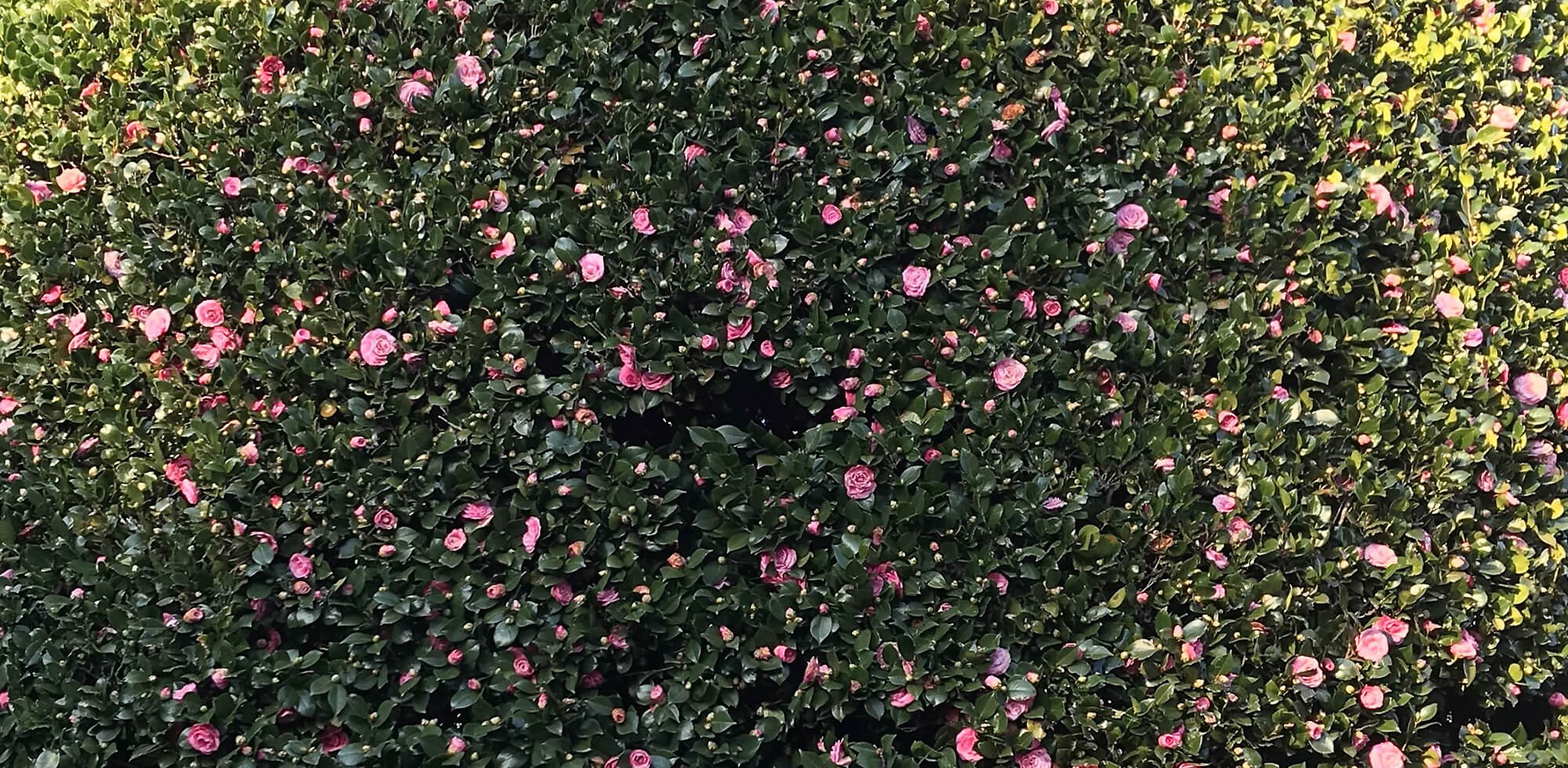
Here you will find interesting facts about camellias from A - F
A for moss removal
Camellias can be successfully propagated by moss. In China I visited tree nurseries that use this technique very successfully. The advantage of this somewhat difficult method of propagation is that you quickly get a large young plant that contains the exact genetic material of the mother plant. If you want, you can try it and should take the following into account:
The best time to remove moss is in early summer, when the bark can be easily removed. You choose a healthy, upright growing, well-branched branch with a length of approx. 50 cm or even longer and mark the area where the bark is all around with two incisions that should be approx. 3-4 cm apart with a sharp one Knife is carefully removed so that the cambium cells are exposed.
If you want, you can dust the wound with a rooting powder after lightly moistening it with water. (It's best applied with a brush). Now generously dip one or two handfuls of sphagnum moss into water and then carefully squeeze it out so that it is moist but not dripping wet and wrap it tightly around the injured shoot area. A transparent, stable and flexible plastic film is then wrapped tightly around the trunk over the moss to protect it from drying out and sealed tightly at the top and bottom with waterproof adhesive tape or similar so that no rainwater gets in, especially at the upper part can. This is important because roots cannot form in a wet environment. The package is then wrapped with aluminum foil and/or plastic film and sealed again with adhesive strips.
In the carefully wrapped package, a good root system should form in the warm, moist environment by autumn, which can be clearly seen under the transparent plastic film if you carefully remove the aluminum foil. Now the new plant is separated below the package and potted with the remaining and well-rooted sphagnum moss.
The young camellia is now cultivated in a pot like a young plant for the next 1-2 years before it is planted out in the garden.
A for dude
I am often asked how old and how big camellias can get. Camellias don't stop growing, in their home countries in Southeast Asia there are even specimens that are over a thousand years old and have recently been recognized by the International Camellia Society to highlight their botanical and cultural value.
The oldest camellia north of the Alps is in Pillnitz Castle Park near Dresden. The so-called "Pillnitz camellia" was planted there in 1801 and is around 230 years old, over 11 meters high and has a diameter of around 9 meters. In March it shows up to 35,000! Blossoms. In our latitudes you can expect an average increase of 10 cm per year; There are also slow-growing or fast-growing varieties. Occasionally you can see older camellias in Germany that are between 4 and 7 meters high.
B for companion plants
If you are fortunate enough to have a camellia garden, there are several things to consider.
In addition to the variety of varieties, the flowering times of the individual camellia varieties must also be taken into account. After all, if you choose wisely, you can have blooming camellias in your garden from September to May, sometimes even into June. But what do you plant with it?
Blueberries, who would have thought of that? Like camellias, they love slightly acidic soil and begin to bear fruit when the camellia has already bloomed. We are left with the culinary joy of snacking on blueberries and with three plants, each with an early, medium and late harvest time, the blueberry season is guaranteed from July to September.
The false camellia (Stewartia pseudocamellia) is not edible, but beautiful. Like the camellia, it also belongs to the tea plant family (Theaceae). It comes from Japan and grows 4 to 6 meters high in our latitudes. Unfortunately, this beautiful large shrub or small tree is rarely found here.
Azaleas, hostas and hydrangeas are also suitable companions that complement the camellia flowers well. A valuable perennial is the beautiful Liriope muscari, which displays its upright flower clusters in blue-violet or white in late summer. Their wintergreen, narrow, grass-like foliage is particularly attractive, providing a good contrast to the lush foliage of camellias.
B for leaves
Camellias are evergreen plants. Their leaves decorate them all year round, so that the camellias look very beautiful even when they are not in bloom. That's why I describe the shape and color of the foliage for each variety.
Camellias have different leaves, from a light, fresh green to a deep dark green, all shades of color are available. The leaf shape can be narrow, lanceolate, large, wide, oval and also jagged at the edges. Some camellia leaves are veined, some leaves, especially from wild forms, have a strongly structured leaf surface.
| "Holly Bright" | Camellia granthamiana | Camellia "impressinervis" |
 |
 |
 |
B for flower shape
Camellias have six different flower shapes. It also happens that the same camellia has several different flower shapes on one bush or the flowers vary, for example from semi-double to peony-shaped. The individual flower shapes are shown below:
| simply | half-filled | anemone-shaped |
 |
 |
 |
| peony-shaped | rose-shaped | completely filled |
 |
 |

|
B for flower size
Camellias also have a lot to offer when it comes to flower size. The following flower sizes are available:
| Miniature flower: | 3 - 5 cm |
| small flower: | 6 - 8 cm |
| medium-sized flower: | 8 - 10 cm |
| big flower: | 10 - 13 cm |
| very large flower: | 13 - 18 cm |
B for flowering time
There are three different flowering times for camellias. It must be taken into account that camellias, which are present all over the world, can bloom at different times of the year depending on the hemisphere. Some camellia varieties even bloom tirelessly from early to late, in our part of the world that means from January to April. Depending on the weather, the flowering times can of course vary, i.e. start earlier or last longer.
| Northern Hemisphere | Southern Hemisphere |
| early flowering period: October - January | early flowering period: March - June |
| average flowering period: February - March | average flowering time: June - August |
| late flowering period: March - June | late flowering period: August - October |
D - like fertilizing
Like all plants, camellias need a balanced diet. Special fertilizers for camellias or ericaceous plants are ideal. Please note the dosage specified so that over-fertilization does not occur. It is important to fertilize regularly, weekly during the vegetation phase from March/April to the end of July. In August, a high-potassium final fertilization supports the maturation process of buds and new shoots. Do not fertilize in full sunshine; make sure that the potting soil is not dry.

